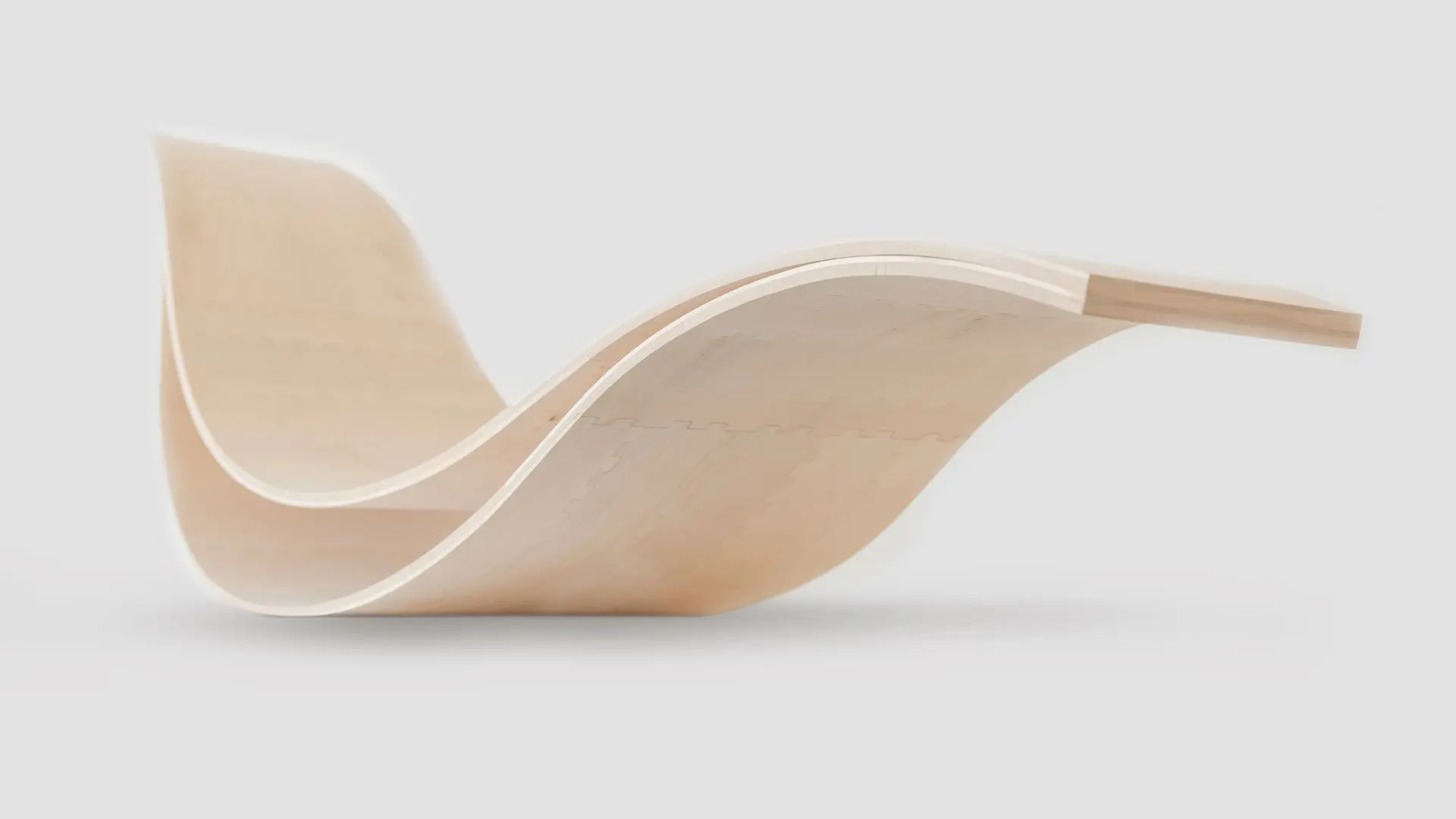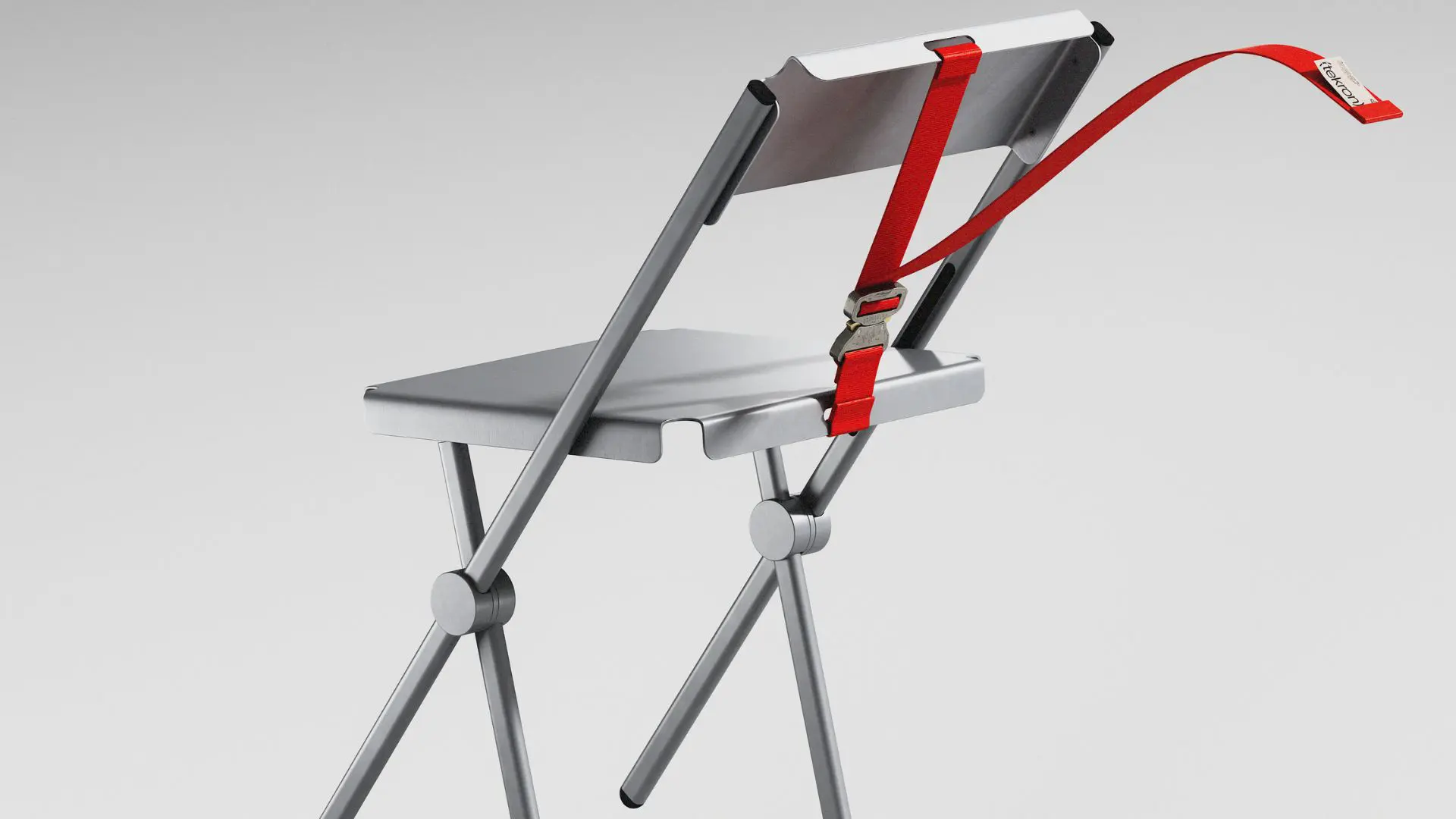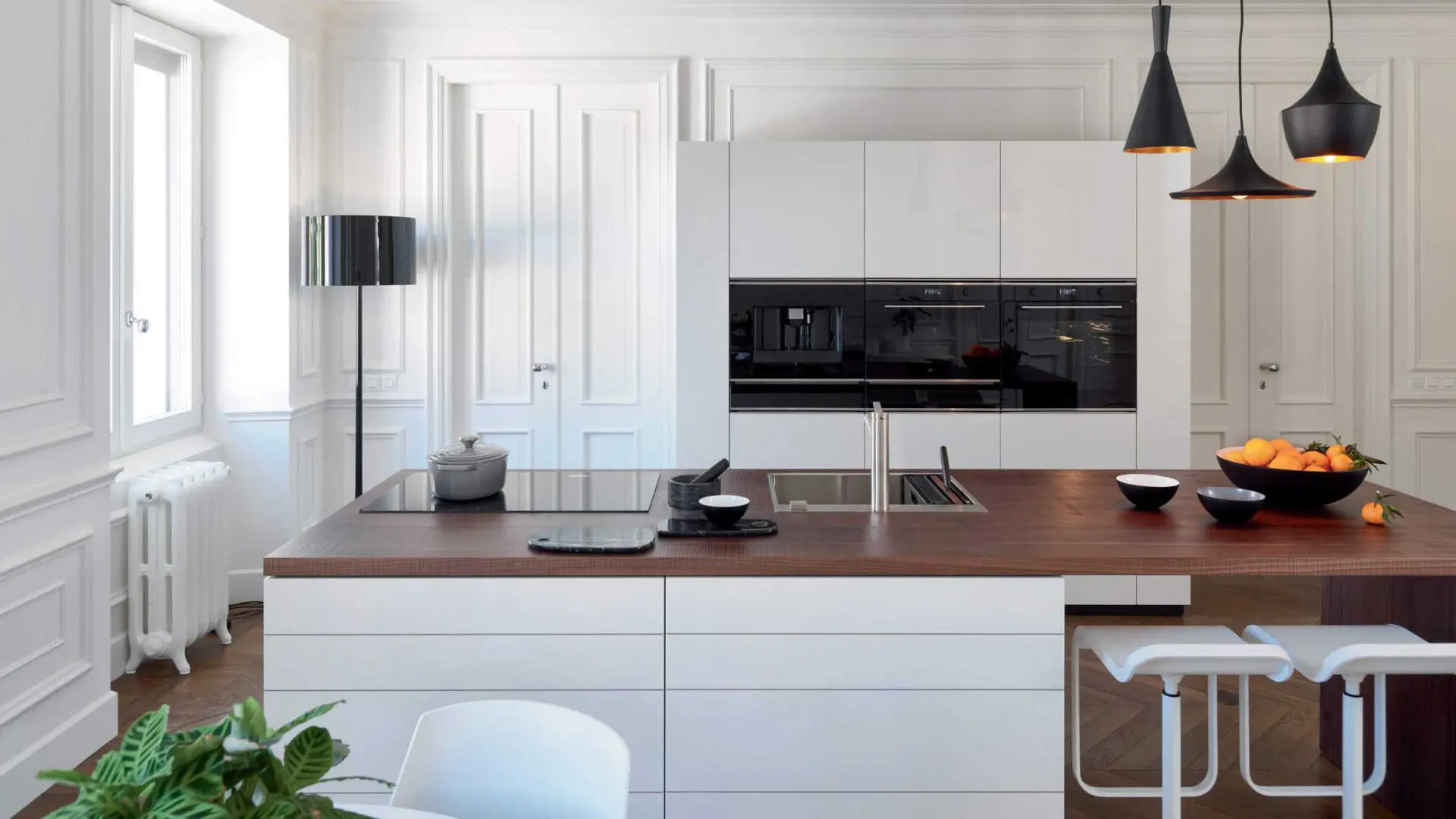HygroShape is self-assembling furniture that grows into its final shape

Researchers at the University of Stuttgart have created a prototype of a wooden chair that assembles itself.
Called HygroShape, the collection (which includes a standard chair and a rocking lounger) can be shipped in a flat package and all customers have to do is open the package and leave the wood for a few hours.
The wood will then assume the desired shape of the furniture item. “HygroShape is a first of its kind concept for truly self-shaping furniture,” explains the university.
“Using the natural, intrinsic properties of wood, furniture pieces are produced in physically programmed flatpack configurations, materially programmed to shape themselves when unpacked.”

This self-shaping emerges from hygroscopic shrinkage that naturally occurs in wood materials and can happen as quickly as overnight.
This hygroscopic phenomenon is linked to the unique anisotropic fibrous composite composition of the wood cell walls which expand when wet and contract in drying, while at the same time providing remarkable strength to weight performance.

Once shaped, the parts lock mechanically creating stability, while retaining an active ergonomic function through small harmonious movements.
Material programming for 4D wood manufacturing
Researchers at the University of Stuttgart have harnessed the natural warping ability of wood to create HygroShape, finding a way to enhance the reliability of this phenomenon and the stability of the furniture.

Moreover, the HygroShape pieces also come with a wooden interlocking mechanism that automatically connects when the furniture is assembled.
Overall, it implements a novel material programming approach for digital design and fabrication in which functions such as movement are physically encoded inside the material system.

Wood is positioned as a programmable material in which a change in both volume and stiffness can be precisely correlated to a change in moisture content.
The project represents a shift in design and manufacturing processes implementing material programming to harness the unique potentials of sustainable materials and practices.
With this comes a new material design language embracing the qualities and characteristics of the natural as an integrative expression of form and function.








